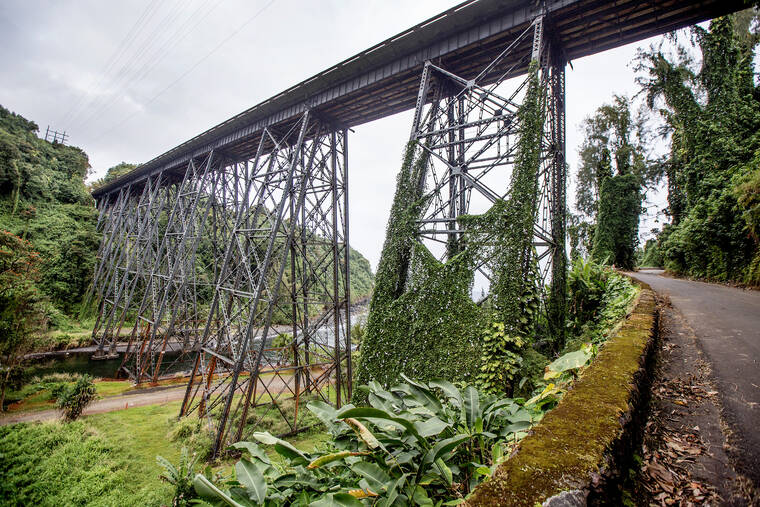The long-closed Hakalau Beach Park will reopen more than a decade after being shut to the public according to a state Department of Transportation document.
The Hamakua park was closed in 2017 after extensive lead contamination was found in the park’s soil, stemming from lead paint used on the overspanning Hakalau Stream Bridge.
Despite closing at the same time and for the same reason as the nearby Kolekole Beach Park, that latter park has reopened multiple times — most recently on Wednesday, in fact — while Hakalau has remained closed. Of the two parks, Hakalau’s soil was determined in 2018 to have a higher lead concentration.
However, the U.S. Department of Transportation announced in January a $74.6 million allocation to the state for the rehabilitation of the aging Hakalau and Nanue bridges. The Hakalau rehabilitation will also include remediation of the lead-contaminated soil within the park.
A draft environmental assessment for the Hakalau project was published Tuesday. That assessment pegged the park’s reopening date tentatively in late 2028.
The late date appears to be a function of the two separate aspects of the project. The assessment states that the park would only reopen after the bridge rehabilitation is completed, and the bridge rehabilitation would only begin after the soil remediation work is completed.
Both sides of the project require extensive work. According to the assessment, the soil remediation effort requires the removal of more than 7,600 cubic yards of toxic soil from the park, to be replaced with clean fill. Vegetation also would be replaced, except for large trees, which would be “evaluated on a case-by-case basis,” according to the draft assessment.
The contaminated soil would be disposed of at the West Hawaii Sanitary Landfill.
Meanwhile, the bridge’s substructure is reaching the end of its useful life — a 2011 assessment found the bridge to have “unstable” foundations, and at least one bridge footing must undergo emergency repairs before the project itself begins.
The proposed work on the bridge would replace all seven of the bridge’s steel trestles with new concrete trestles and install new foundations that would proof the structure against a “200-year storm.” The upgrade could be completed without any long-term full bridge closure, although some single-lane closures might be required during the roughly three-year construction.
The full project has an estimated cost of $78 million.
While the recent reopening of Kolekole Gulch Park might have lessened the blow, some Hamakua residents are frustrated that one of the district’s few beach parks won’t reopen until more than a decade after its initial closure.
“It just depresses me more and more,” said resident Thomas Gehweiler. “I was a surfer, man. Hakalau appealed to me because it was less crowded than Kolekole, and I went there every day.”
While Gehweiler has been outspoken about the need to reopen the park for years, he said the constant closure has worn him down.
“I sort of gave up on it,” Gehweiler said. “I don’t know, I’ve been here for 50 years, and none of these beach parks are what they used to be.”
Hawaii County Parks and Recreation Director Maurice Messina said Wednesday that the county is standing by to provide whatever assistance DOT requires, and looks forward to the reopening as soon as possible. However, because it is wholly the DOT’s responsibility — it was their paint on their bridge that caused the issue in the first place — the county is largely disconnected from the project.
With the publication of the draft assessment — which anticipated no significant environmental impact — a 30-day public comment period has begun. The assessment can be viewed at tinyurl.com/46wc9mm7, and comments can be sent to HonoluluPlanning@wsp.com.
Email Michael Brestovansky at mbrestovansky@hawaiitribune-herald.com.









